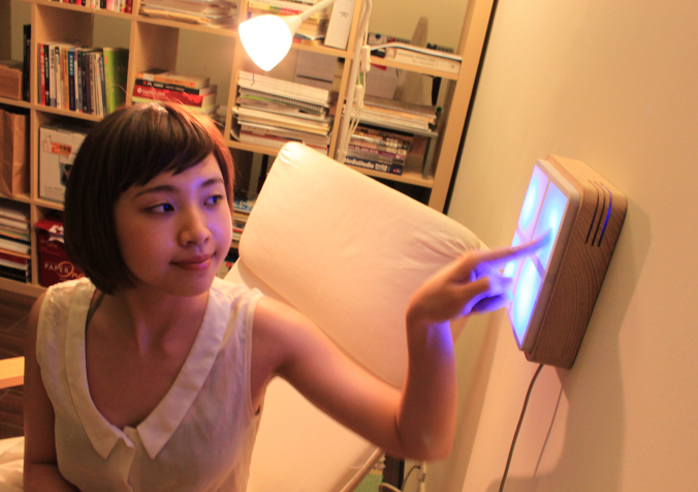The Three Paradigms of HCI
1. 1st paradigm: engineering/human factors
2. 2nd paradigm: cognitive science
3. 3rd paradigm: phenomenological matrix:
"...addressing issues that are bad fits to prior paradigms, ranging from embodiment to situated meaning to values and social issues."
"These include participatory
design, value-sensitive design, user experience
design, ethnomethodology, embodied interaction, interaction
analysis, and critical design." (p. 2)
"a third (“3rd”) paradigm, which treats interaction not as a
form of information processing but as a form of meaning
making in which the artifact and its context at all
levels are mutually defining and subject to multiple interpretations." (p. 2)
強行將舊的 paradigm 套用到 HCI 的後果:
"when force-fitting new insights to old paradigms
CHI fails to capitalize on the full value of these approaches." (p. 3)
沒有清楚的認識論, 會限制 HCI 的發展:
"(3) the lack of clarity about the
epistemological distinctions between paradigms is a
limiting factor in the development of the field,..." (p. 3)
Thomas Kuhn's theory of the structure of scientific revolutions:
"A paradigm shift, then, is accompanied by a shift
in the examples which are considered to be central to
the field." (p. 3)
"In particular, Agre argues, following a long line of research
in scientific metaphor, that technical fields tend
to be structured around particular metaphors which
suggest the questions that are interesting to ask and
methods for arriving at answers to them. So, for example,
the metaphor underlying cognitive science –
that human minds are like information processors –
suggests questions it could be interesting to ask - how
humans process their input, how they represent information
internally, how they access memory, etc. - and
also suggests methods for finding answers to those
questions, for example that we can effectively model
human mental activity using computational code and
validate these models by comparing computational and
human input and output." (p. 4)
"Following Agre, we argue that central to each paradigm
in HCI is a different metaphor of interaction. Each such
metaphor introduces ‘centers’ and ‘margins’ that drive
choices about what methods are appropriate for studying
and designing interaction and for how knowledge
claims about interaction can be validated." (p. 4)
為何 usability study 對 non-task-oriented interaction 無效?
"A fourth set of issues arises out of the domain of nontask-
oriented computing. These approaches tend to
be bad fits to the 1st and 2nd paradigms, whose methods
tend to require problems to be formalized and expressed
in terms of tasks, goals and efficiency - precisely
what non-task-oriented approaches are intended
to question. It is difficult, for example, to apply usability
studies to ambient interfaces, since standard
evaluation techniques are ‘task-focused’ in the sense of
asking users to pay attention to and evaluate the interface,
precisely what the system is devised to avoid." (p. 4)
Embodiment 在三種 paradigms 的角色:
1. In human factors, attention is paid to such factors as the fit of a mouse to the human hand or the amenability of particular font sizes to be easily read.
2. Cognitively based work in HCI has laid out physical constraints that usefully inform interface
design such as the speed at which humans are able to react in various situations.
3. Embodiment in the 3rd paradigm is based on a different, central stance drawing on phenomenology: that the way in which we come to understand the world, ourselves, and interaction derives crucially from our location in a physical and social world as embodied actors.
"A focus on embodied interaction
moves from the 2nd paradigm idea that thinking is
cognitive, abstract, and information-based to one
where thinking is also achieved through doing things in
the world, for example expression through gestures,
learning through manipulation, or thinking through
building prototypes." (p. 7)
3rd paradigm 的 中心是 現象學觀點, 而非物理的體現性:
"Despite the centrality of embodied interaction to the 3rd
paradigm, it would be a mistake to take physical embodiment
– i.e. having a body - as its central, defining
characteristic. Rather, what is central is a phenomenological
viewpoint, in which all action, interaction, and
knowledge is seen as embodied in situated human actors.
This position leads to a number of intellectual
commitments that contrast with those taken by the first
two paradigms." (p. 7)
意義在三種 paradigms 中的角色:
"meaning, ignoring it unless it causes a problem, while
the 2nd interprets meaning in terms of information
flows. The 3rd paradigm, in contrast, sees meaning and
meaning construction as a central focus. It adopts the
stance that meaning is constructed on the fly, often
collaboratively, by people in specific contexts and
situations, and therefore that interaction itself is an
essential element in meaning construction."
3rd paradigm 的 central metaphor:
" ...whose central metaphor is interaction
as phenomenologically situated." (p. 9)
1st paradigm: reduce error
2nd paradigm: more efficiently
3rd paradigm: situated meaning-making
Different Ways of Knowing
"The three issues described previously – limited and inappropriate measures of success, acceptable methods,
and recognition of innovation – can be traced to a lack of awareness of the
epistemological distinctions between the paradigms,..."
see Table 2: Epistemological distinctions between the paradigms
Objective vs. Subjective Knowledge
Generalized vs. Situated Knowledge
Information vs. Interpretation
“Clean” vs. “Messy” Formalisms
所有的 paper 都應該交代 underlying paradigms:
"We would expect that calling out the underlying paradigm
will become a standard part of every publication
in our field." (p. 17)
參考:
互動設計派典浪潮
互動設計第三派典的角色與必要性
EX 6. short essay
Critically introduce "InTouch" project with three paradigms respectively. (including 1st, 2nd, 3rd paradigms, at least 500 words in total)
Reference:
Deadline 2013/11/13



